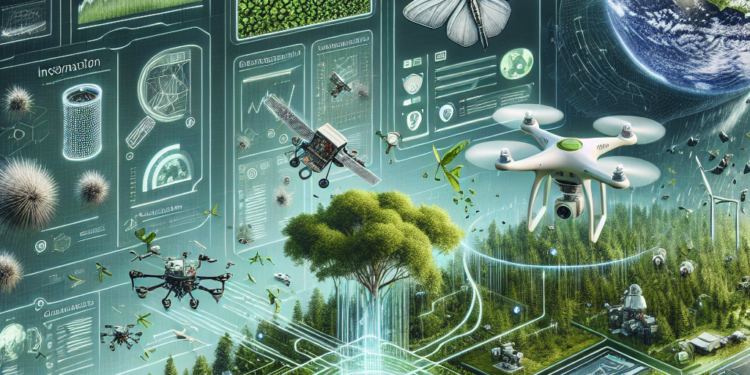The use of artificial intelligence (AI) in environmental monitoring has become more prevalent in recent years, as it offers a more efficient and accurate way to collect and analyze data. By utilizing machine learning algorithms, AI can process large amounts of data quickly and effectively, providing valuable insights into the state of the environment. This article will explore several industry case studies where AI has been successfully implemented in environmental monitoring.
Case Study #1: Water Quality Monitoring
Water quality monitoring is crucial for ensuring the safety of drinking water and the protection of aquatic ecosystems. Traditionally, water quality monitoring has been done manually by taking water samples and analyzing them in a lab. However, this process is time-consuming and often results in delayed responses to water contamination events.
One company that has successfully implemented AI in water quality monitoring is AquaSmart. AquaSmart uses AI algorithms to analyze data from sensors placed in water bodies, such as rivers and lakes, to detect changes in water quality in real-time. The AI system can detect contaminants, such as heavy metals and harmful bacteria, and alert authorities to potential threats to water quality. This allows for quicker responses to contamination events and helps protect both human health and the environment.
Case Study #2: Air Quality Monitoring
Air pollution is a major environmental issue that has serious implications for human health. Monitoring air quality is essential for identifying sources of pollution and implementing measures to reduce emissions. Traditionally, air quality monitoring has been done using stationary monitoring stations that measure air pollutants at fixed locations. However, these stations are limited in scope and may not capture the full extent of air pollution in a given area.
One company that has leveraged AI for air quality monitoring is Aclima. Aclima uses a fleet of sensor-equipped vehicles to collect real-time air quality data on a block-by-block basis. The data is then analyzed using AI algorithms to create detailed maps of air pollution levels in urban areas. This information can be used by city planners and policymakers to make informed decisions about reducing air pollution and improving air quality for residents.
Case Study #3: Deforestation Monitoring
Deforestation is a major environmental issue that has far-reaching impacts on biodiversity and climate change. Monitoring deforestation rates is crucial for understanding the extent of forest loss and implementing conservation measures. Traditional methods of monitoring deforestation rely on satellite imagery and manual analysis, which can be time-consuming and labor-intensive.
One company that has successfully used AI for deforestation monitoring is SilviaTerra. SilviaTerra uses satellite imagery and machine learning algorithms to analyze forests at scale and monitor changes in forest cover over time. The AI system can detect deforestation events in near real-time and provide insights into the drivers of forest loss. This information can help conservation organizations and governments take action to protect forests and combat deforestation.
Case Study #4: Wildlife Conservation Monitoring
Wildlife conservation is another area where AI is being used to monitor and protect endangered species. Monitoring wildlife populations is essential for understanding population trends and implementing conservation measures. Traditional methods of monitoring wildlife, such as camera traps and field surveys, can be time-consuming and expensive.
One organization that has successfully implemented AI for wildlife conservation monitoring is WildTrack. WildTrack uses AI algorithms to analyze footprints left by animals in the wild and identify individual animals based on unique features in their tracks. This non-invasive method of monitoring wildlife populations allows for more efficient and accurate data collection, which can help researchers track population trends and implement targeted conservation strategies.
Conclusion
The use of artificial intelligence in environmental monitoring is revolutionizing the way we collect and analyze data on the state of the environment. By leveraging machine learning algorithms, AI can process large amounts of data quickly and accurately, providing valuable insights into environmental issues such as water quality, air pollution, deforestation, and wildlife conservation. The industry case studies highlighted in this article demonstrate the potential of AI to transform environmental monitoring and help protect the planet for future generations. As technology continues to advance, the role of AI in environmental monitoring is only expected to grow, offering new opportunities to address pressing environmental challenges.













